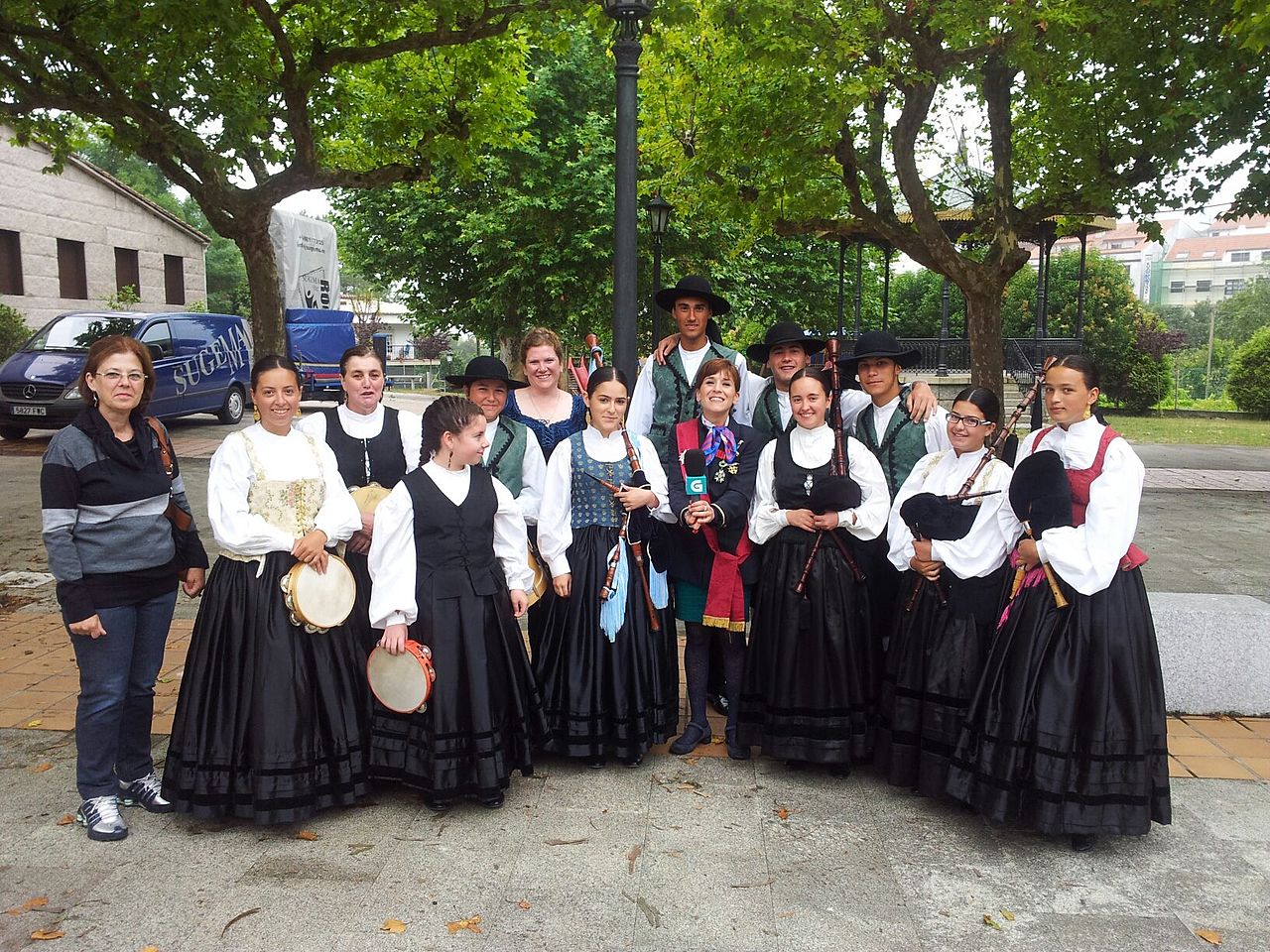
We understand how Galician regional costume the one that the men and women of this region used regularly in the past. It is true that the one used for daily tasks was not the same as the one used on holidays. In the same way, there were differences between the different provinces and even councils of Galicia.
However, the Galician regional costume has, since ancient times, a greater uniformity than that of other Spanish communities. Both men's and women's are always made up of the same garments, although there are different combinations and shades. But, even with regard to the latter, the austerity and little color variety of all of them. In any case, if you want to know more about the Galician regional costume, we invite you to continue reading.
A little history of the Galician regional costume
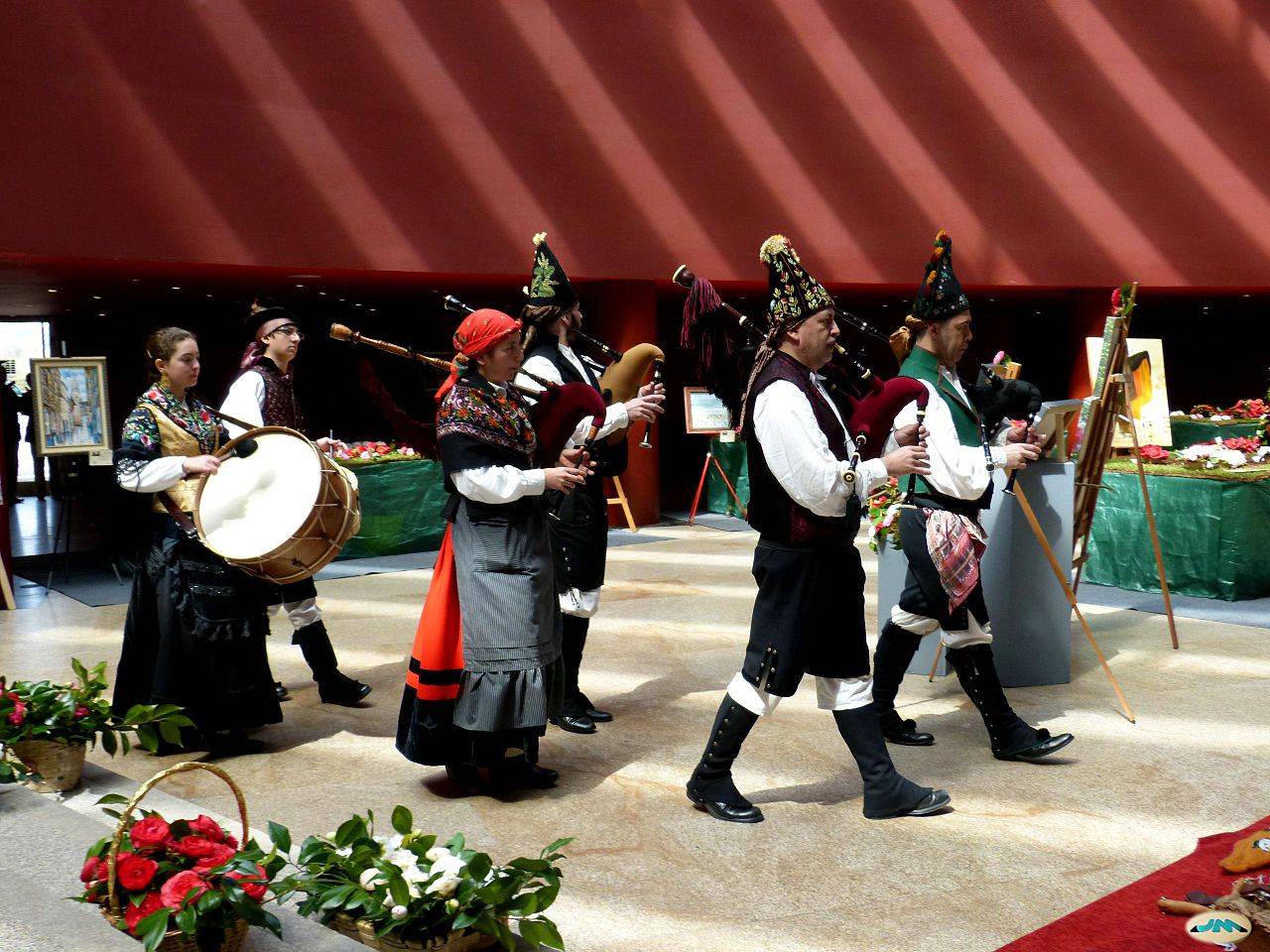
Musical group dressed in the Galician regional costume
It is very difficult to talk about the origins of the typical costume of Galicia (here we leave you an article about beautiful places in this region). But they go back many centuries. The inhabitants of rural areas assimilated the dress of their ancestors and passed it on to their descendants.
In fact, this clothing did not begin to be studied until the middle of the XNUMXth century, when the Romanticism it aroused interest in the indigenous traditions of the towns. The result of this was the Galician Folk Society, created by intellectuals like Emilia Pardo Bazán o Manuel Murguia to revitalize Galician traditions and culture.
Among its activities was the founding of regional choirs who wanted to dress in typical clothing. It was then that an attempt was made to recover the Galician regional costume. At that time, it had already been replaced by more modern clothes of different fabrics created with the impulse of the Industrial Revolution. It was therefore necessary to investigate.
It was discovered that the typical costume of Galicia dates back, at least, to the seventeenth century, as it appeared in different documents. Among these, notarial deeds where wedding dowries and inheritances were listed. It was also seen that, in those times, they were the petrucci or older of the place who marked the fashions and also that, with the clothing, circumstances of those who wore it were indicated. For example, there were handkerchiefs for petitions, skirts for married or single women, and dengues from absences.
On the other hand, those regional costumes were made with woolen or linen fabrics that received different names according to their manufacture or origin. Thus, picote, estameña, lamp, born, sentel, tow or pan.
As we told you, all these fabrics were simplified from the Industrial Revolution and also at this time influences of the cities were introduced into the suit. Likewise, the artisanal elaboration was giving way to the sewing workshops and, with all this, there was a progressive standardization of the Galician regional costume that has survived to this day.
The Galician regional costume for women and men
Once we have done a bit of history, we are going to talk to you about the garments that make up the typical Galician costume for women and men. We will see them separately, but it is interesting that you know that some are common for both sexes.
Typical Galician costume for women
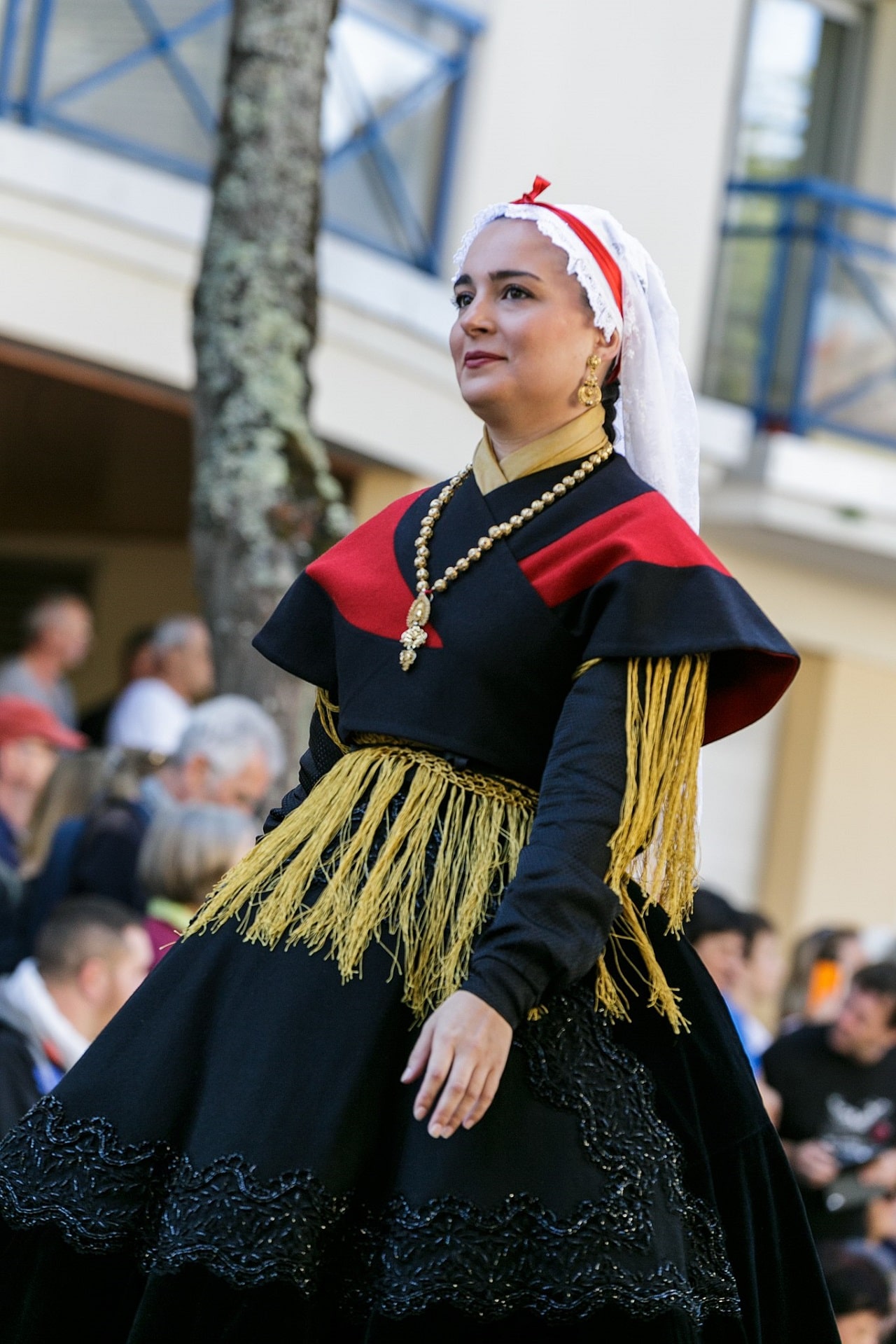
Galician regional costume for women
The basic elements of traditional Galician clothing for women are the red or black skirt, the apron, the dengue fever and the headscarf. Regarding the first, also called saya or basqueIt is long, although it does not have to touch the ground and, in addition, it must turn one and a half at the waist.
For its part, the apron is tied at the waist above the skirt. As for the handkerchief or cloth, it is folded in half to obtain a triangular shape and tied around the head at its ends. In addition, it can be of several colors and, sometimes, a straw hat or a cap is put on it, which is the same, but smaller.
Dengue deserves a separate mention, since it is one of the most typical garments of the Galician regional costume. It is a piece of cloth that is placed on the back and whose two ends are passed through the chest to go back and tie again in the back. Usually, it is adorned with velvet and rhinestones. Under dengue fever, he gets a White shirt with a closed neck, puffed sleeves and pleated trims.
The shoes, called corn o stringers They are made of leather and have wooden soles. With them, the basic clothing of the typical Galician costume for women is completed. However, other elements can be added.
This is the case keep it, which is a larger apron; of the refaixo, which in turn is placed on petticoats and popolos, a kind of long underwear that reaches to the knees and ends in lace. The same can be said for shawl, an eight-pointed handkerchief, of the hose or media, of doublet and the jacket. Finally, it receives the name of frog the set of ornaments that hang on the chest and that culminate the details of the suit.
Typical Galician clothing for men
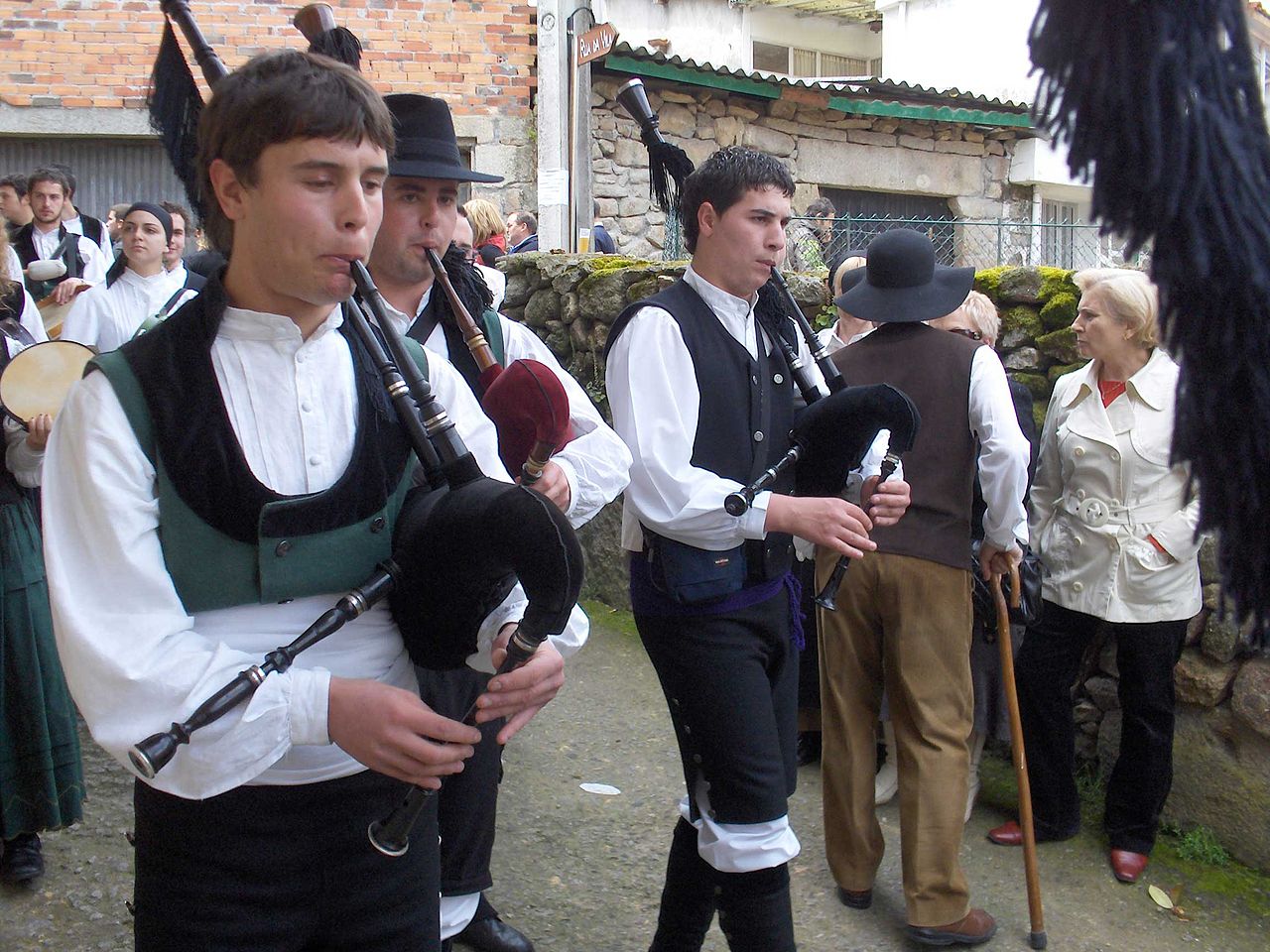
Pipers dressed in the Galician regional costume for men
For its part, the typical Galician clothing for men consists mainly of black leggings, jacket, vest and cap. The first ones are a kind of pants that reach the knees. Sometimes they are complemented with leggingsAlso some leggings, but that go from that last part of the body to the shoes. The latter appeared in the XNUMXth century to replace the stockings, although they are also still used.
Under the pants, you can also wear a prune. It is a white underwear garment that peeks out from under it or is tucked into the gaiter tied to the leg with a ribbon.
As for the jacket, it is worn short and fitted. It also features narrow sleeves and two horizontal pockets. Under it, a shirt and above the vest. Also, at the waist goes the band or girdle, which goes around two times, has tassels and can be of various colors.
Finally, the montera o monteira It is the typical hat of the Galician regional costume for men. In its design, it coincides with its Asturian namesake and its origins date back to the Middle Ages. The Galician was large and triangular, although there were also earmuffs for cold days.
Likewise, the montera used to wear tassels and, as a curiosity, we will tell you that, if they went to the right, the wearer was single, while, if they appeared to the left, he was married. Over time, it gave way to the hats or hats, already made of felt, already of the beret type in the Vigo area (here you have an article about this city).
On the other hand, although it has already fallen into disuse, there was another very curious piece in typical Galician clothing. We talk about the crown, a cape made of straw that was used for the coldest days of the year.
When is the Galician regional dress used?
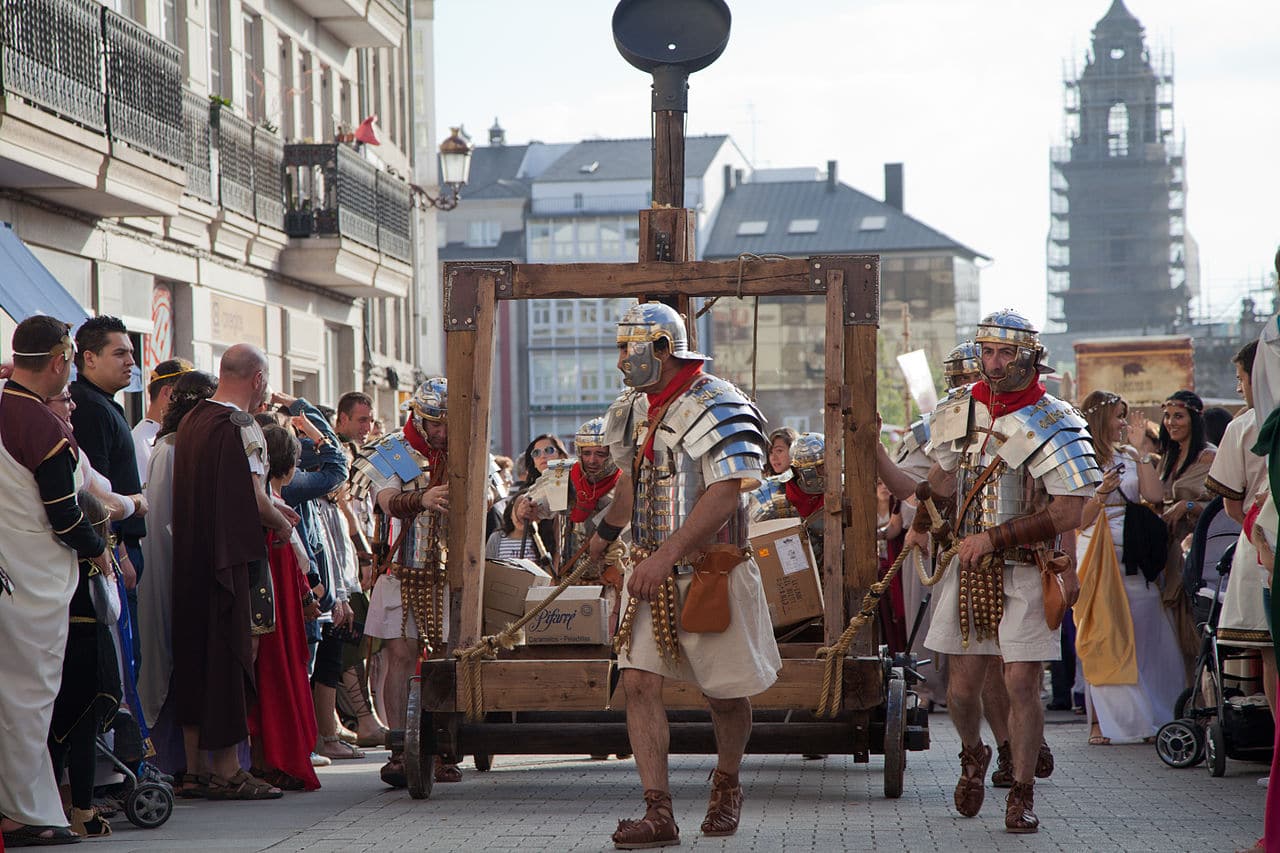
Arde Lucus festivals
Once you have known the typical Galician clothing, you will also be interested in knowing when it is used. Logically, in the festivals of the towns of all Galicia there are people dressed in these costumes.
Normally, they are part of traditional orchestras whose members are wind and percussion musicians. As for the first family of instruments, the interpreters of Galician bagpipe, even if they work alone.
This instrument belongs to the deepest tradition of that land, to the point that it is one of its symbols. For this reason, a piper could not be understood without the typical costume of Galicia. It is true that the bagpipe is also a basic element of Asturian folklore and even of the Bierzo and Sanabria areas, but the Galician has some differences.
In any case, both pipers, percussionists and dancers are always dressed in the Galician regional costume. And they are present in the main celebrations of their land. For example, they are not lacking in festivities of the Apostle Santiago, not only patron of Galicia, but also of all Spain.
Likewise, they walk the streets of Lugo during the festivities of San Froilán and appear in Easter celebrations such as those of Nursery y Ferrol, all of them declared of tourist interest. You can even see these interpreters dressed in the typical Galician costume in celebrations less related to religion.
For example, it is common to find bands of pipers in Burning Lucus, where the people of Lugo recall their Roman past; on the Free Fair of Pontevedra, based on the medieval past of the city, or on the Catoira Viking Pilgrimage, which commemorates the arrival in that town of Norman troops to loot the area.
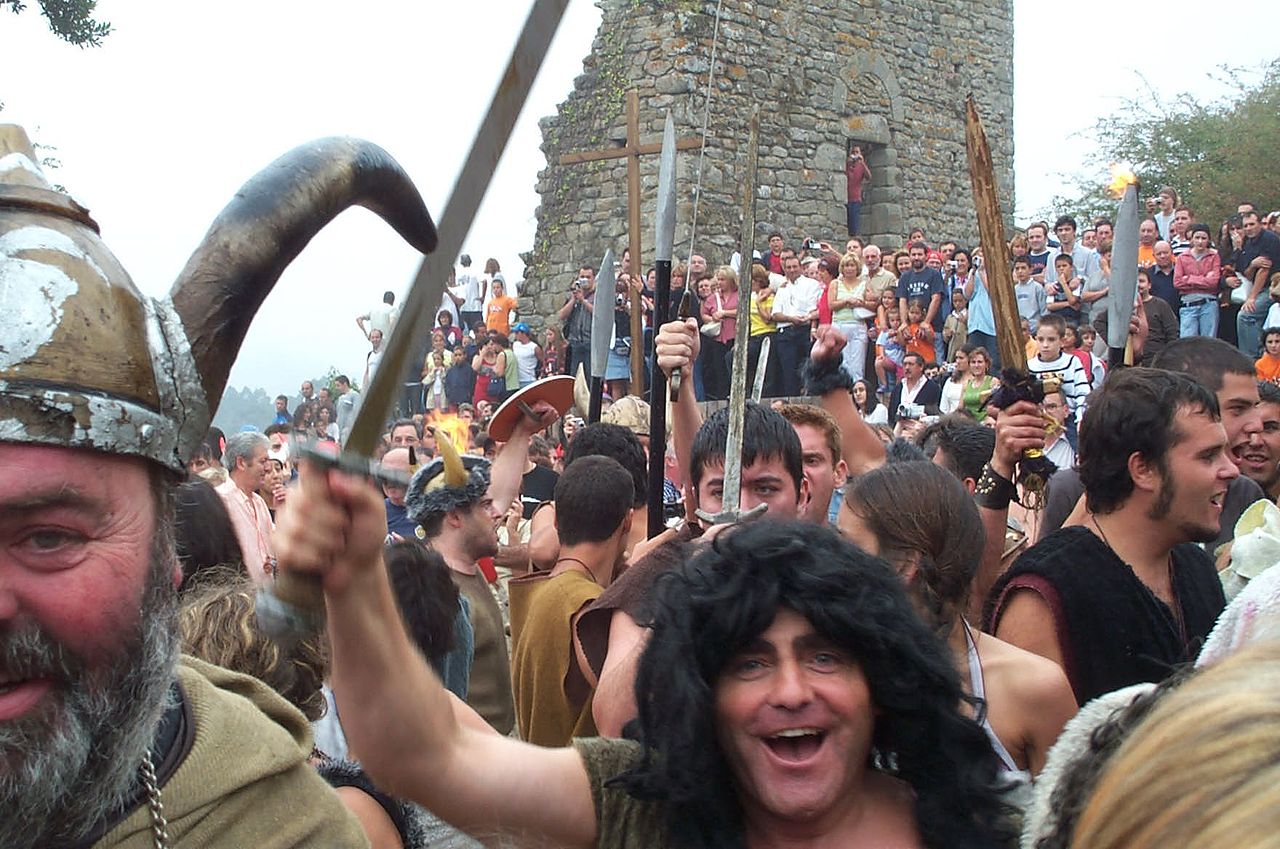
Catoira Viking Pilgrimage
Finally, the number of people dressed in the Galician regional costume in gastronomic festivities is very large. Throughout the year there are many throughout the region. But we will highlight for you the famous Seafood Festival held in the town of O Grove every October, and the Octopus, which takes place in Carballino on the second Sunday in August. However, the consumption of this cephalopod is so ingrained in Galicia that, practically, all localities have their gastronomic celebration based on it and with its natives dressed in the typical costume.
In conclusion, we have reviewed for you the Galician regional costume for both men and women. We have gone through its history and its traditional elements to finally show you where you can see it most often. Now you only have to travel to Galicia and appreciate it live.